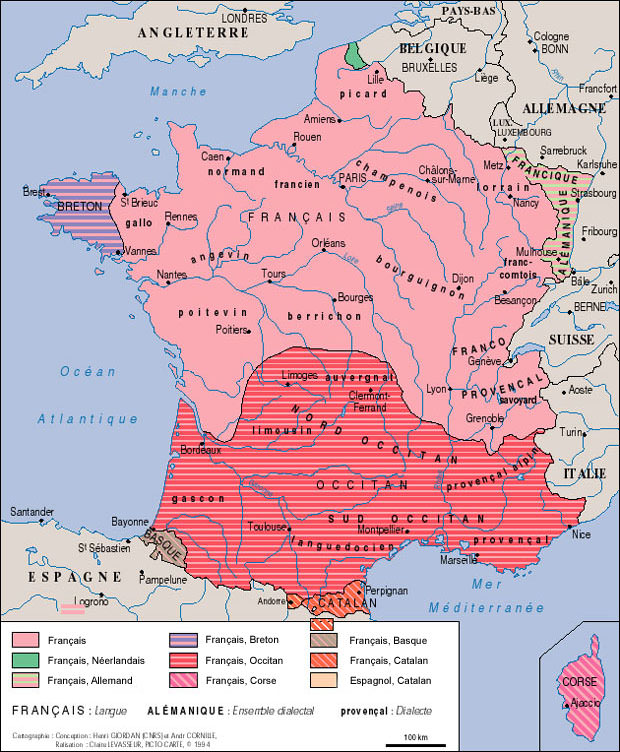
posted by Simon Kemp
Eugène-René Poubelle was préfet, or regional administrator, in charge of the Seine département, essentially Paris and its suburbs, from 1883 to 1896. What he did while he was there has left a permanent mark on French life, and on the French language. Does his name sound familiar to you at all?
M. Poubelle is the man who brought dustbins to France. In respectful memory of this extraordinary achievement, the French word for bin is la poubelle. (This little fact also featured in the Chassez l’intrus quiz a few weeks ago.)
Paris in the late nineteenth century had a problem. Two million people lived there, and two million people create quite a lot of rubbish. It was Poubelle’s job to come up with a system to deal with it. His solution was surprisingly far-sighted: he didn’t just introduce the bin, he introduced three bins per household: one for perishable rubbish, one for paper and cloth, and one for crockery and shells. It was a precursor of modern recycling. The boxes were known as boîtes Poubelle, soon shortened to poubelles. While the three-box rubbish-sorting system may not have endured, the name has stuck.
Not only did the French honour M. Poubelle by naming their rubbish receptacles after him, the Parisians gave their préfet one of the greatest marks of respect the city can offer: they named one of their streets after him. In the swanky sixteenth arrondissement, home to Paris’s most expensive real estate, you can find the Rue Eugène Poubelle.

Last month, an apartment on this street sold for 1 440 000 euros, which is a lot of money to pay to live at an address that very nearly translates as Trashcan Alley.
…..And one other thing. I was contacted a few weeks ago by the BBC to ask if I’d mind verifying the definitions and pronunciation of some French words they wanted to use in their CBBC ‘comedic panel show’, The Dog Ate My Homework. (I know, the life of a Schools Liaison Officer is just an endless round of showbiz glamour.) All of the words seemed to have been picked because they sounded funny, and inevitably, poubelle was one of them. Ever the educator, I insisted that they couldn’t say la poubelle on air without at least a nod to the memory of the great M. Poubelle. Will they mention him? Probably not. We watch a lot of CBBC in my household, owing to the presence of a number of eight- and nine-year-old boys, but I haven’t seen the show yet. If you catch it, and Eugène makes it to air, please let me know!




![gauls_color[1]](http://lurkio.co.uk/blog/wp-content/uploads/2013/02/gauls_color1.jpg) The Gauls were a Celtic people who settled France some time around 600 BC. They weren’t the first people to arrive in France: the cave paintings at Lascaux were painted fifteen thousand years earlier, and stone tools have been found in the Hérault département that date back one and a half million years. The Gauls came to dominate the culture and language spoken in the territory that would become France, however. Only the Basque language spoken in the far south-west and across the border in northern Spain preserves an echo of the speech of earlier populations. For French, the Gauls are our starting point. While the Gauls may be the ancestors of many modern French people (and many more, raised on the adventures of Asterix and Obelix, would very much like to think so), their language has left much less of an imprint on French than that of the invaders who were to conquer them, the Romans. Latin is the real root of modern French, as we’ll see in a later post, imported into France by the conquerors to be the language of trade and administration, and gradually filtering down to supplant the Gaulish language over the course of six centuries. Gaulish was not entirely wiped out, though: it survives as a language through Breton, one of the family of modern-day Celtic languages that includes Welsh and Gaelic. And if you look carefully you can find a few Celtic remnants scattered in the French spoken today as well.
The Gauls were a Celtic people who settled France some time around 600 BC. They weren’t the first people to arrive in France: the cave paintings at Lascaux were painted fifteen thousand years earlier, and stone tools have been found in the Hérault département that date back one and a half million years. The Gauls came to dominate the culture and language spoken in the territory that would become France, however. Only the Basque language spoken in the far south-west and across the border in northern Spain preserves an echo of the speech of earlier populations. For French, the Gauls are our starting point. While the Gauls may be the ancestors of many modern French people (and many more, raised on the adventures of Asterix and Obelix, would very much like to think so), their language has left much less of an imprint on French than that of the invaders who were to conquer them, the Romans. Latin is the real root of modern French, as we’ll see in a later post, imported into France by the conquerors to be the language of trade and administration, and gradually filtering down to supplant the Gaulish language over the course of six centuries. Gaulish was not entirely wiped out, though: it survives as a language through Breton, one of the family of modern-day Celtic languages that includes Welsh and Gaelic. And if you look carefully you can find a few Celtic remnants scattered in the French spoken today as well.



